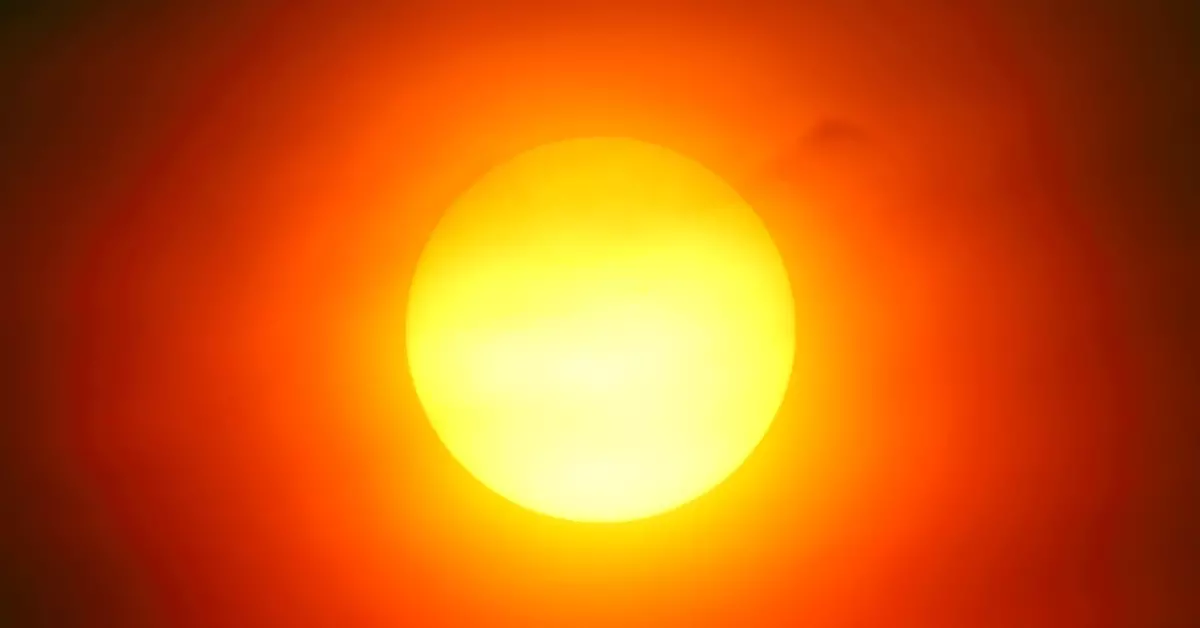NASA & NOAA Reports Record-Breaking Heatwave On The Earth

NASA & NOAA Reports Record-Breaking Heatwave On The Earth
In a staggering announcement, federal scientists from both NASA and the National Oceanic and Atmospheric Administration (NOAA) revealed that Earth experienced its hottest June to August period on record this year. This unprecedented heatwave, marking the warmest summer in the Northern Hemisphere and the warmest winter in the Southern Hemisphere, has sent shockwaves across the globe, leaving devastating consequences in its wake.
The scorching temperatures, fueled by exceptionally high sea surface temperatures and the return of El Niño, resulted in widespread climate anomalies. NASA Administrator Bill Nelson emphasized the real-world impact of these record-setting temperatures, citing extreme weather events that threatened lives and livelihoods worldwide. From sweltering heatwaves in Arizona and the Midwest to raging wildfires in Canada and Hawaii, the effects of this global heatwave were felt far and wide.
The summer of 2023 saw a continuous onslaught of extreme weather events, from deadly wildfires in Canada and Hawaii to intense heatwaves in South America, Japan, Europe, and the United States. These conditions exacerbated the challenges faced by various regions, with South America, Europe, and Asia grappling with severe rainfall and flooding. The situation in Italy, Greece, and Central Europe became particularly dire due to the relentless downpours.
NOAA’s chief scientist, Sarah Kapnick, highlighted the alarming trend, noting that August marked the 534th-consecutive month with temperatures above the 20th-century average. Kapnick pointed to global marine heatwaves and the growing El Niño phenomenon as contributors to this year’s exceptional warming. Despite these natural factors, the steady march of background warming, driven by emissions, continued to escalate the situation.
The Arctic and North America experienced their warmest summers on record, with Asia, Africa, and South America also enduring their hottest June to August periods. Oceania faced its warmest winter, further underlining the global nature of this climate crisis. Europe, although not the hottest, still grappled with the impact of rising temperatures, facing its third-warmest summer.
Climate scientists like Josh Willis from NASA’s Jet Propulsion Laboratory pointed to the role of El Niño in amplifying the summer’s record warmth. Willis explained that exceptionally high sea surface temperatures, coupled with ongoing marine heatwaves, had pushed the world over the edge, setting new records and intensifying the effects of climate change. These rising sea surface temperatures were especially evident in the tropical Pacific Ocean, where El Niño exerted its influence on global weather patterns.
The impact of this heatwave extended beyond rising temperatures. NOAA reported a record-low global sea ice extent in August, with Antarctica experiencing its fourth consecutive month with the lowest sea ice extent on record. The data revealed a concerning trend: sea ice extent globally was about 550,000 square miles less than the previous record low, recorded in August 2019. The situation in Antarctica was particularly alarming, as it continued to track at record lows, highlighting the vulnerability of polar regions to climate change.
Gavin Schmidt, a NASA climate scientist, delivered a sobering message: “Unfortunately, climate change is happening.” He emphasized that the predictions made by scientists were now becoming a harsh reality, with dire consequences for the planet. Schmidt stressed that the situation would only worsen if carbon dioxide and other greenhouse gases continued to be emitted into the atmosphere, urging urgent and decisive action to mitigate the effects of climate change.
The data presented by NOAA painted a grim picture. The June to August global surface temperature was a staggering 2.07 degrees above the 20th-century average of 60.1 degrees, surpassing the previous record by 0.43 degrees. The Northern Hemisphere summer temperature, a key indicator of the overall warming trend, was 2.59 degrees above average. In the Southern Hemisphere, winter temperatures were 1.53 degrees above average, further illustrating the widespread impact of rising temperatures.
August, in particular, stood out as a month of extreme anomalies. Record-warm temperatures covered nearly 13% of the world’s surface, the highest August percentage since data collection began in 1951. Additionally, August set a record for the highest monthly sea-surface temperature anomaly, reaching 1.85 degrees, marking an alarming deviation from historical norms.
The announcement by NOAA and NASA served as a stark reminder of the urgency of addressing climate change. As the world grappled with the immediate consequences of extreme weather events, the need for global cooperation and decisive climate action became more evident than ever. The record-breaking heatwave of 2023 underscored the critical importance of reducing greenhouse gas emissions, transitioning to renewable energy sources, and implementing sustainable practices to safeguard the future of our planet.
In the face of this unprecedented challenge, governments, communities, and individuals must come together to drive meaningful change. Climate policies, investments in renewable technologies, and international collaboration are essential components of the collective effort needed to combat climate change and build a sustainable future for generations to come. The record-breaking summer of 2023 served as a wake-up call, urging humanity to act swiftly and decisively in the face of this existential threat.



